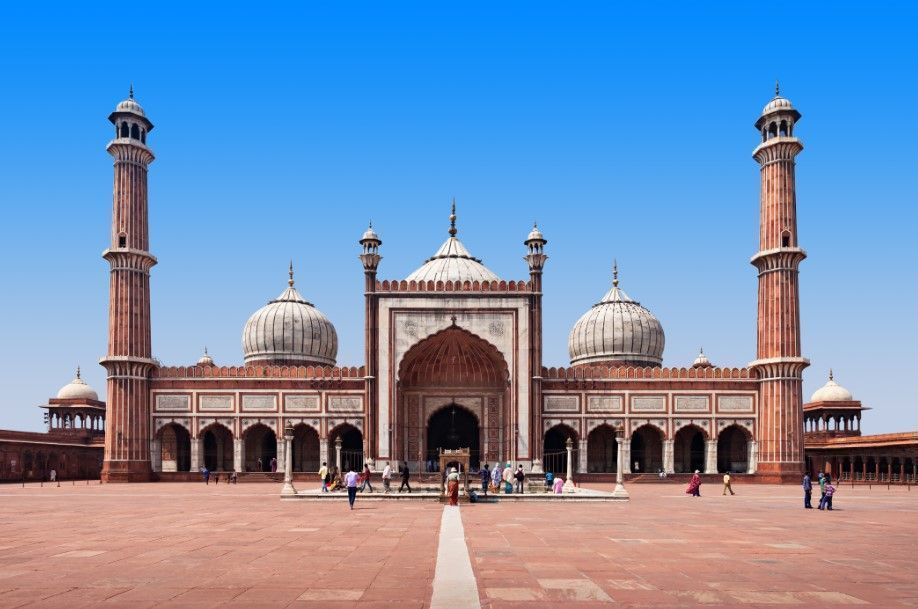Nestled in the heart of Old Delhi, the Jama Masjid stands as an architectural masterpiece and a symbol of India’s rich cultural and religious heritage. This grand mosque, commissioned by the Mughal Emperor Shah Jahan, is not only a place of worship but also a testament to the Mughal dynasty’s architectural prowess and the vibrant history of Delhi.
Historical Legacy: Commissioned in 1650 by Emperor Shah Jahan, the Jama Masjid is one of the largest and most well-known mosques in India. It was constructed over six years and required the labor of thousands of workers. The mosque stands as a legacy of the Mughal era, known for its architectural brilliance and cultural contributions.
Architectural Splendor: The Jama Masjid’s architectural design is a harmonious blend of Persian, Mughal, and Indian architectural styles. Its iconic red sandstone and white marble construction exudes grandeur and magnificence. The mosque’s massive central dome, flanked by two towering minarets, commands attention and respect.
Courtyard and Prayer Hall: The mosque’s vast courtyard can accommodate thousands of worshippers, making it one of the largest mosque courtyards in the world. The prayer hall, adorned with marble and sandstone inlays, features intricate designs and patterns that reflect the artistic finesse of the Mughal craftsmen.
Buland Darwaza: The mosque is accessed through the grand Buland Darwaza (Great Gate), a towering entrance that leads to the courtyard. This imposing gateway is adorned with inscriptions from the Quran and decorative carvings, creating an awe-inspiring entrance that befits the grandeur of the mosque.
Minarets and Views: The mosque’s two minarets, each standing at a height of 40 meters, offer panoramic views of Old Delhi and its surroundings. Visitors who climb the minarets are rewarded with breathtaking vistas that showcase the bustling lanes, historic sites, and the distinctive character of the city.
Religious Significance: The Jama Masjid remains an active place of worship for Muslims in Delhi. It is particularly significant on Fridays, when worshippers gather for the Jumu’ah (Friday) prayers. The mosque’s serene ambiance and historical significance make it a place where faith, culture, and history converge.
The Jama Masjid is not merely a place of worship; it’s a living testament to the artistic prowess of the Mughal era and a reflection of Delhi’s diverse and layered history. As you stand in its courtyard, admire its architecture, and explore its intricacies, you’re transported to a time when faith and creativity converged to create a legacy that continues to resonate through the ages. The Jama Masjid stands as a beacon of India’s spiritual and architectural heritage, inviting all to experience its magnificence and absorb the essence of history and devotion.

